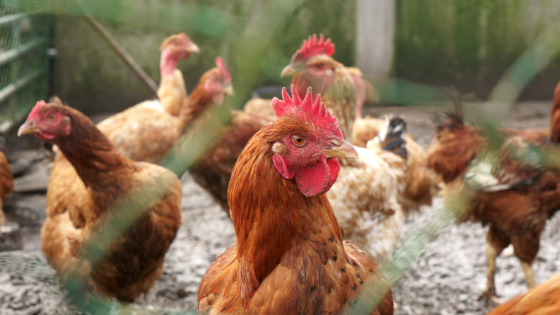Most chick catalogs and websites reveal general characteristics of chicken breeds. For example, Leghorns and most other white egg breeds are described as being flighty and noisy. In contrast most heavy breeds, like Australorps and Wyandottes, are claimed to be quiet, gentle, or tame. Some catalogs even go further claiming that certain breeds, often Orpingtons, are friendly.
While biologists caution about affixing human personality traits to animals, catalog generalizations of chicken temperament are mostly accurate. Light colored, white egg laying breeds are usually nervous, strong flyers that are somewhat difficult to manage in a small backyard flock. Usually the reverse is true for heavy, brown egg laying breeds.
Every chicken may show the behavioral characteristics typical of its breed, but within those broad categories is individual variation. Each chicken is different from its flockmates, even if they are of the same breed. Observing varied behavior is one of the fascinating aspects of keeping a backyard flock of a few hens. Sometimes they show seemingly human traits.

For example, anyone watching their flock of five or six Buff Orpingtons, Rhode Island Reds, or any other breed will notice that one or two will be night owls. They wander around the run or coop until darkness is near, while others are already snugly sleeping on their roost. In contrast, others are early birds and up at first light while their coopmates still slumber.
Differences between birds goes far beyond sleeping habits. Some chickens seem to avoid people. If the bird were a child, we might say she’s shy. Others eagerly approach their human owners and seem pleased to greet us. Some hens are aggressive while the sisters are passive. The list of personality traits goes on and on. In contrast, the owner of a small flock can identify individual hens and be fascinated at how much personality variation each shows. It is a joy of caring for a small flock.
In order to observe personality differences, it’s important to be able to identify individual birds. That’s probably impossible in a big flock but relatively easy in a backyard flock. If each bird is of a different breed the task is easy. A six-hen flock of one each of a Black Australorp, Rhode Island Red, Silver Laced Wyandotte, Americana, Buff Orpington, and Barred Rock or any other diverse combination makes identification simple. Each breed’s feathers are of a different hue or pattern.
If all the birds are of the same breed identifying individuals is trickier but far from impossible. Banding each chicken makes individual identification certain. That’s rarely needed by an observant person. At first glance, all birds may all look identical but careful observation reveals differences. For example, a hen will be slightly bigger or smaller than the flockmates. Or she may have a slightly different physique. Often a hen will have an unusual colored feather or two.
Another surefire way to identify individuals is to study their legs, feet, combs and wattles. Wattles are the fleshy growths under the chin. They are either red or pink and have several pouches or protuberances. Like human fingerprints it’s rare for two chickens to have exactly the same wattles, so differences can be used to tell one bird from the others. Combs also vary somewhat from bird to bird.
The shanks and feet of some breeds are uniform. For example, nearly all White Leghorns have bright yellow shanks and feet, making it difficult to tell one bird from another by leg and foot patterns. Other breeds show variations that can be used for identification. Barred Rocks, for example, have generally yellow shanks and feet that often have dark blotches in patterns unlike those of other birds. Careful observers can use foot and shank patterns to recognize individual birds.
Once a flock owner knows how to tell each bird apart, it’s easy to recognize and enjoy their varied personalities. It is a joy of keeping chickens.